Hisense won't necessarily be the first brand that comes to mind when you think of the best TVs you can buy. However, it's well worth checking out a brand that's made waves over the past few years by cramming much of the latest and greatest tech into competitively-priced TVs.
Each year, the brand has brought out TVs that are cheaper alternatives to many of the displays from bigger brands, albeit with similar specifications. And now, with CES 2022 behind us, we're looking forward to a whole new range of Hisense devices purchasable this year.
Throughout 2022, Hisense is due to launch a wide selection of TVs, including its brand new flagship U9H series, alongside new upgrades for the previous U6, U7 and U8 series. And as we expected, upgrades for the more affordable A6, A7 and A8 series are inbound, too. A couple of new Hisense U Series soundbars are also on the way.
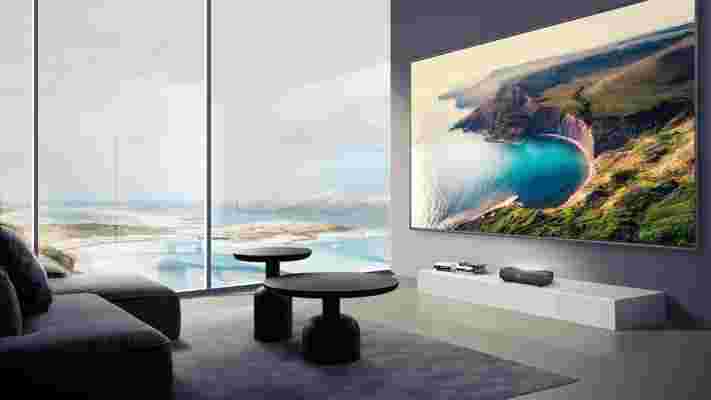
If that sounds like an exciting mix of TVs to choose from, that's because it is. Hisense has a lot of range and although it's mostly known for offering value LCD screens at aggressive price points, last year in 2021 it released several high-spec models that are well worth your time, too.
This combination has lured plenty of shoppers to Hisense, with the company ranking fifth overall for TV sales in the US in 2021. And it’s quickly growing, largely thanks to the fantastic value across the entire Hisense range.
In our guide below, we’ll round-up the TVs that Hisense has brought out in 2021, as well as the ones it's releasing in 2022, from entry-level 4K displays for those on a budget through to the latest Laser TVs that bring the big screen cinema experience to your living room.
If you’re not sure this brand is for you, check out our should I buy a Hisense TV guide , which helps you decide based on recent Hisense TV reviews.
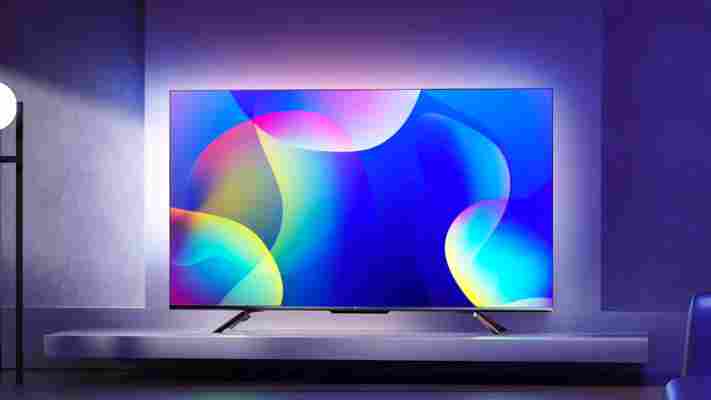
Hisense U9H: Hisense's brand new flagship packs in Mini LED backlighting – a first for its US range – allowing for greatly improved HDR performance. Other impressive specs include a 120Hz refresh rate, 2,000 nits of peak brightness and support for Dolby Vision and Dolby Vision IQ.
The U9H adds an ATSC 3.0 tuner, too, alongside a much-improved audio suite featuring embedded speakers in both the top and bottom of the TV allowing for a richer surround sound experience without the need for an external soundbar.
Additionally, eARC, WISA, and a 2.1.2 audio channel configuration allow for an immersive audio experience with Dolby Atmos spatial audio support. It sounds like the U9H could be the full package, then, combining excellent picture and audio quality for a well-rounded high-tech experience.
The Hisense U9H will debut in a 75-inch size, and launches "late summer 2022" for $3,199.99. As such, expect to see Hisense's flagship launch around August or September.
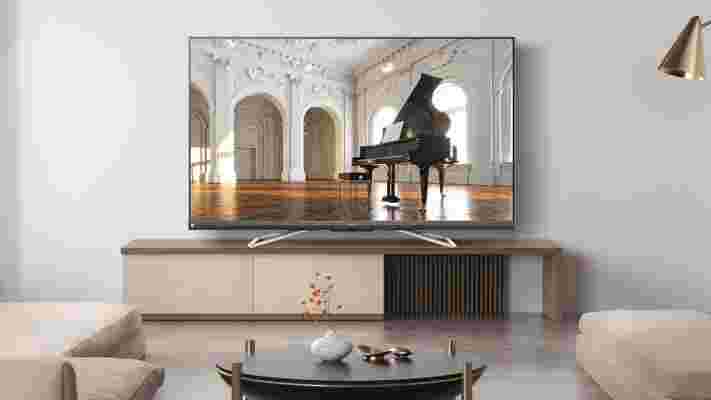
Hisense U8H: Hisense's latest in its U8 series is positioning itself as "the best all-around TV" in terms of tech, picture quality and price point. The U8H is boasting the same Mini LED tech that's being packed in the company's new flagship U9H, and a new 75-inch size for if you're looking to go big. The Hisense U8H is launching "mid summer 2022" from $1,099.99. Expect it to launch roughly around July to August.
Hisense U7H: Also launching around that July-August 2022 window is the new U7H, which Hisense says is a great option for gaming, and we're inclined to agree, as the TV packs in many of the premium features of its more expensive counterparts at a slightly more affordable price point. A new 85-inch variant is being offered, too, meaning the U7H could be the perfect choice for serious gamers looking for a colossal screen size.
Hisense U6H: Much like the U6G before it, Hisense's new U6H ULED TV looks like it's positioning itself as one of the more affordable sets packed with high-end tech. And while it's lacking its beefier counterparts' 120Hz refresh rate, you're still getting quality features like HDR10+, Dolby Atmos, Game Mode Plus for seriously low input lag and prices starting at $579.99 for the 50-inch variant. All this could make the U6H seriously easy to recommend, even if it's at the lower rung of Hisense's ULED lineup, when it launches sometime between June and September 2022.
Hisense A7H, A6H and A4H: Launching in "Spring 2022" (so between March and June, most likely), Hisense is prepping a new batch of mid-range wonders if you can't quite afford to shell out for one of its ULED offerings. Both the A7H and A6H pack quality features like HDR10+, Dolby Vision and eARC functionality.
The A4H is a smaller, 2K resolution offering, but is appropriately priced from just $199.99 and will be available in 32, 40 and 43-inch sizes.
We obviously only have word on Hisense's US TV range so far, though it's given us a good look at the new technologies the TV maker is deploying for 2022.
It's all about Mini LED these days, with Hisense bringing the backlighting technology to its US range (after a debut in its UK range last year). Mini LED packs in tens of thousands of tiny LEDs to better control lighting, contrast and brightness, and is also being used by Samsung, Philips and LG.
It's certainly a change in strategy for Hisense, though, which previously prioritized its own proprietary Dual Cell panel tech, which pairs a 4K grayscale display with a 'luminance layer' to add color to proceedings. It was certainly a curious idea, and since Hisense ditched OLED after the pretty disastrous Hisense O8B , it seemed to be its next big bet. Not any more, perhaps?
Hisense still has big plans laser TV range , previously saying that the tech is the future of home entertainment, calling it a “more natural way for human eyes” to watch TV, with reduced amounts of red light to contend with, alongside greater energy efficiency – with reportedly 40% less energy consumption than LCD sets of the same size.
In 2019, sales of laser TVs grew 107% in China, making it the fastest-growing TV category in the country. However, it’s always easier to increase a small number of sales than a large one, and there just isn't the sample size or mass market penetration to confidently say where laser TVs are going.
Although lots of the Hisense TV tech seems flashy, and erm, laser-y, there are some more mundane developments regarding smart platforms that may hold the most promise for the TV maker – with more sets using the brilliant Roku OS, also found on streaming devices like the Roku Express and Roku Premiere .
We're seeing a gradual shift away from Android TV sets in 2022, too, towards the updated Google TV platform also used on new Chromecast streaming sticks and Sony TVs. At any rate, it should be better than Hisense's own Vidaa U platform, which is fast and rather sleek at points, but tends to have some odd blind spots around picture settings and screensavers.
You'll find both Dolby Vision and HDR10+ HDR formats on these TVs, too, and Hisense tends to pack them into more mid-priced sets than some of the competition.
Hisense U9DG Dual Cell Series (75-inch only): This is Hisense's high-end, flagship TV and it comes with a big price tag, but it may be justified. Hisense has been teasing its Dual Cell technology for a few years now, pairing together a 4K grayscale screen with an HD 'luminance layer' for enhanced contrast and color – in a similar fashion to the quantum dot layer of its QLED TVs, perhaps, but with significantly different underlying technology.
The Hisense U9DG features two million local dimming zones, which on paper is a big step up from the tens of thousands of dimming zones on the latest Mini LED TVs – even if it pales in comparison to the per-pixel lighting of OLED screens. You'll get a 120Hz panel, up to 1,000 nits peak brightness, as well as a host of gaming features such as VRR , ALLM, FreeSync, and "high-speed HDMI ports" (which we hope refers to HDMI 2.1 , for next-gen gaming capabilities).
Read our review here: Hisense U9DG Dual Cell Android TV (75U9DG) review
Hisense U800GR 8K ULED (75-inch only): The U800GR is Hisense's debut 8K TV, packing in 33 million pixels as well as the beloved Roku smart TV platform and AI upscaling. It features Dolby Vision and Dolby Atmos too, and also 1,000 nits peak brightness – not as bright as new Samsung TVs , certainly, but a pinch higher than today's best OLED TVs . We reviewed the model when it soft-launched in Australia as the U80G , and we liked it very much indeed, praising the upscaling and functionality (even if the sound left a little to be desired).
Hisense U8G ULED (available in 55, 65-inch): Other mid-range models include the Hisense U8G ULED, with 1,500 nits brightness, 4K resolution, Dolby Vision IQ (for calibrating brightness in response to ambient light), Dolby Vision and an anti-glare screen.
We awarded the Hisense U8G Android TV (65U8G) 4 out of 5 stars when we first reviewed it for its exceptional picture quality and great value for money.
Hisense U7G ULED gaming TV (available in 55, 65, 75-inch sizes): There's also a gamer-specific model called the Hisense U7G, with a 4K display and 120Hz panel, as well as HDMI 2.1, VRR, ALLM and Freesync Premium for high-spec video passthrough and anti-screen-tearing technologies.
Hisense U6G and U6GR ULED TV (available in 50, 55, 65, 75-inch sizes): The Hisense U6G is the lowest specified model in the new 4K TV lineup, making do with a 60Hz panel and 600 nits peak brightness, though it does pack in full array local dimming (rather than edge lighting) as well as Dolby Vision / Dolby Atmos format support.
We reviewed the Hisense U6G ULED TV in 2021 and awarded it 4 out of 5 stars for its excellent image quality and affordable price.
In November 2021, Hisense released the U6GR ULED TV in 55-inch and 65-inch variants but only at Costco in the US, meaning that you'll need to be a Costco member in order to purchase the new TV.
Hisense A6G, R6 and R7 smart TVs (sizes from 43-inch to 75-inch): Some lower-spec models are also on their way, with the 'R' series sets presumably coming with the Roku TV OS, and the budget 'A' budget model starting at a meagre $299 for those a bit more strapped for cash. You can expect cheap processing, and we'd advise to opt for smaller sizes for screens this cheap, so as not to make any visual issues too glaring – but they offer a more accessible starting point than a lot of the more premium models above.
Hisense L5F Laser Cinema (100, 120-inch): Hisense's projector-TV hybrid is still here, with up to 120-inch projection and 4K images on a paired projector screen, running on the Android TV platform. It is pricey (you may want to opt for a high-end projector like the Samsung Premiere for this amount of cash) but it's there for those wanting to be at the forefront of new, experimental AV technologies.
Hisense U9GQ (75-inch only): This is Hisense’s flagship TV for 2021 and the brand promises it offers “detailed, exquisite and lifelike images”. It has a 75-inch Mini LED display with a high refresh rate of 120Hz. It’s packed with 10,000 LED backlight units and has Full Array Local Dimming Pro, which means it can achieve an impressive brightness of 3,000 nits. It offers Quantum Dot Colour, which Hisense says delivers “over 1 billion true-to-life colours” and HDR10+ and Dolby Vision adjusts images based on what you’re watching to give you the best experience.
Hisense 100L5 Laser TV (available in 88 and 100-inch sizes): Built to be big and bold, Hisense's range of Laser TVs aren't like your average TV. This much becomes obvious as soon as you clock the fact that they give you a massive 88 and 100-inch screen sizes for less money than many regular 75-inch TVs.
The main reason it can offer so many inches for your buck is that it’s not strictly speaking a TV. Rather it’s an ultra-short throw projector combined with a rigid projection screen that’s designed to reject ambient light, so that you don’t have to black your room out every time you want to watch it.
The projector is a DLP affair illuminated by laser lighting, meaning that it can go brighter and reach a wider range of colors than regular lamp projectors. It also won’t need its laser replacing in the course of its lifetime unlike lamp projectors, and also unlike regular projectors can be switched more or less immediately, without significant warmup or cool down time.
We reviewed the Hisense 100L5 Laser TV , awarding it 4 out of 5 stars for its bright, colourful picture and great value for money. Hisense's Laser TV range also includes the 100-inch Hisense L9.
Hisense A9G (available in 55-inch and 65-inch sizes): A new OLED TV from Hisense, the A9G is available in 55-inches and 65-inches. Thanks to HDR10+ and Dolby Vision IQ, there’s excellent picture quality on offer here, as well as brightness with up to 1,000 nits at peak brightness. With IMAX Enhanced licensing, Hisense promises “clearer pictures and brighter images.” And, in terms of audio, you're getting 2.1.2 channel speakers (front-firing) as well as Dolby Atmos support. All of these features make these OLEDs a great idea if you’re looking for a new, very large TV this summer and love watching movies.
Hisense U8GQ (available in 55-inch and 65-inch sizes): The U8GQ range features Quantum Dot Colour and Full Array Local Dimming Pro for consistent lighting and precise brightness control. However, Hisense drops the brightness to 1,000 nits for a more affordable – if less ambitious – QLED television than its more premium offerings. It also features a Game mode, as well as the same IMAX Enhanced certification of the A9G.
Hisense A7GQ series (available in 43-inch, 50-inch, 55-inch, 65-inch, 75-inch sizes): There are a few different mid-range TVs coming from Hisense this summer, including the A7GQ series. This TV comes in a range of different sizes and offers a 4K HDR display and 60Hz panel. It also has Quantum Dot, 4K HDR and Dolby Vision and Atmos built-in with a 60Hz refresh rate.
Hisense E76GQ series (available in 50-inch and 55-inch sizes): Another mid-range TV option from Hisense, this time available in only mid-sized 50-inch and 55-inch sizes. The E76GQ series is similar to the A7GQ with a 4K HDR display and 60Hz panel along with support for 4K HDR content, as well as Quantum Dot, Dolby Vision and Dolby Atmos.
Hisense A6G series (available in 43-inch, 50-inch, 55-inch, 58-inch, 65-inch and 75-inch sizes): If you’re looking for a smaller range of sizes, the entry-level A6G series might be the best bet. This TV supports 4K content, has a 60Hz MEMC, Dolby Vision and DTS:Virtual:X audio to boot.
Hisense A4G series (available in 32-inch and 40-inch sizes): For the smallest (and cheapest) Hisense on offer in summer 2021, the A4G series has DTS:Virtual:X audio and the VIDAA U5 Smart OS.
Everything you need to know about the best TVs today:
Best TV 2021 : the best TVs available to buy in 2021
Best Smart TV 2021 : every smart TV platform and which set does it best
Panasonic TV 2021 : all of the top OLED and LCD televisions of the year
Sony TV 2021 : more Master Series and Bravia TVs on the way
Samsung TV 2021 : every new Samsung TV of this year
Best 65-inch 4K TV : the best big screen TVs for any budget
Skylum’s impressive Photoshop rival finally arrives to automate your photo edits
Photoshop might be rapidly improving its AI editing tools, but a more affordable rival called Luminar Neo just arrived for photographers who want something a little simpler and more affordable.
Want our verdict on Skylum's latest editing software, which has just been given its full release? Check out our in-depth Luminar Neo review , which praises it as "powerful, very easy to use, and a great place to start for photographers who fear the complexity of Lightroom or Photoshop".
The software builds on the promise of predecessors like Luminar AI , but adds new AI tools, like smartphone image processing, that are designed to help you produce pleasing snaps without any editing fuss.
You still get industry-standard tools like curves and white balance adjustments to help you tweak colors and contrast, but Luminar Neo's real special sauce is those AI tools, a few of which we've seen before in Luminar AI. The AI crop tool, for example, quickly fixes your compositions, while the opinion-splitting Sky Replacement mode is on board, too.
But there are lots of new tools in the full version of the software. Luminar Neo can, for example, automatically remove power lines or dust spots from your photos, and performed this very effectively in our tests.
More complex automated edits are a bit of a mixed bag The Relight tool, for example, lets you make exposure tweaks based on a depth map of your photo, but struggles with snaps that have a large depth of field.
Luminar Neo is also currently missing two fairly big features, MaskAI and Portrait Background Removal, which are expected to be added in the next few months. But at only $79 / £59 (for a one-time purchase), the program offers good value that does work out considerably cheaper than a combined Photoshop and Lightroom subscription from Adobe (which is currently $9.99 / £9.98 / AU$14.29 per month).
Analysis: Another strong AI rival for Photoshop
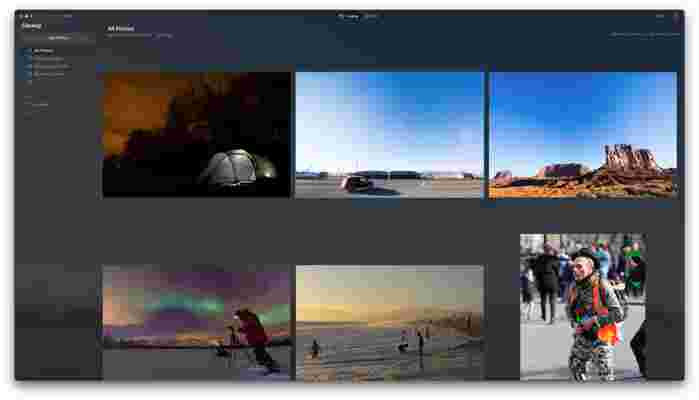
A smartphone-style revolution is taking place in desktop photo editors, thanks to AI-powered tools – and our full Luminar Neo review found it to be a compelling new contender, particularly for amateur snappers.
You won't find Lightroom-style cataloguing or the pro-level depth of Photoshop, but that's precisely the point. If you don't need that level of photo editing or management or find Adobe's software a little too complex, then Luminar Neo is worth checking out.
It's a shame that some tools, like MaskAI, aren't included in the current version of the software, but what's there already is certainly enough to help speed up your editing process.
These kinds of tools, particularly Sky Replacement, tend to split opinion among photographers, with some considering them overstepping the mark and taking post-processing from photography to digital art.
But the majority of Luminar Neo's automated tools make edits in a subtle, time-saving fashion. And with other rivals like Affinity Photo and Capture One offering fine alternatives to Photoshop and Lightroom, Adobe has its work cut out to continue justifying its subscription pricing. Of course, the real winners of all this competition are photographers.
This new Targus backpack will help you find your lost iPhone
Losing your work backpack or laptop bag may no longer be the end of the world thanks to a new release from Targus at CES 2022 .
The accessories maker has revealed a new eco-friendly backpack that comes with Apple ‘Find My’ technology built in.
This means users will be able to monitor and track where any lost items (such as an iPhone ) are headed, for example if they are left on a bus or in a taxi. If the bag is stolen, the information can also be provided to police.
Find My iPhone
Targus says its new Cypress Hero Backpack is also one of its most eco-friendly products yet, constructed from 26 recycled plastic water bottles. This means it's pretty strong and tough, offering IPX3 water resistance, but also fairly lightweight, and it can handle laptops with up to 16-inch diameter screens .
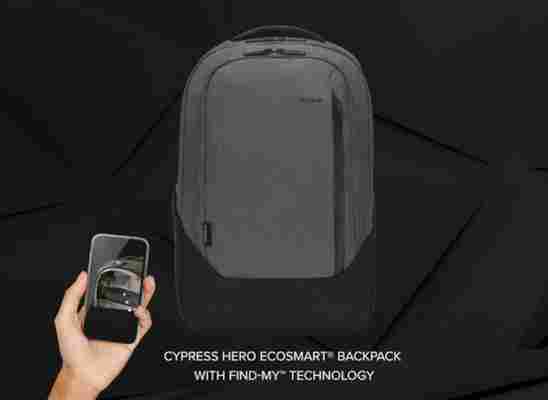
If disaster does strike, users can log in to Apple's Find My network to track their lost bag, although they'll need to set this up in the Targus app first.
If you lose just your iPhone, you'll be able to ping it by pressing a button on the backpack. Users can also set up geofencing alerts, so if the backpack moves out of a certain area, you'll receive an alert, and the tracker also comes with a loud sound alert that can be triggered remotely.
The backpack comes with a replaceable battery that can be recharged via USB, but Targus says you'll get around a year of juice before needing to do so.
“The global pandemic has undoubtedly transformed the way we work, learn, and live,” said Dave Crew, Commercial Director EMEA at Targus. “As we reimagine what the next normal will be and what the future looks like, we are proud to continually bring purposeful technology solutions to the market that address productivity, sustainability, and health and wellness initiatives to enable a seamless life.”
The Cypress Hero Backpack with Find My Technology will be available in spring/summer 2022, costing £139.99/$149.99.
Check out all of TechRadar's CES 2022 coverage . We're bringing you all the breaking tech news and launches, everything from 8K TVs and foldable displays to new phones, laptops and smart home gadgets.